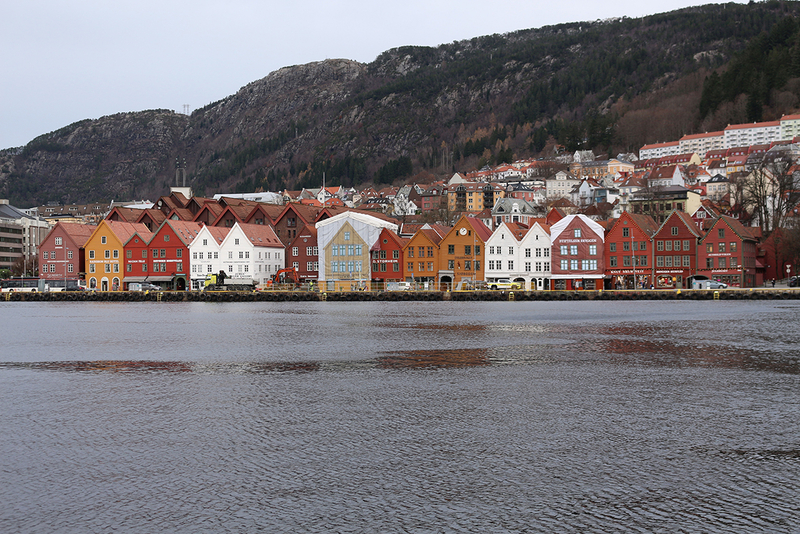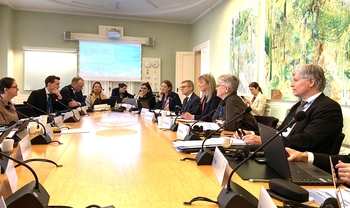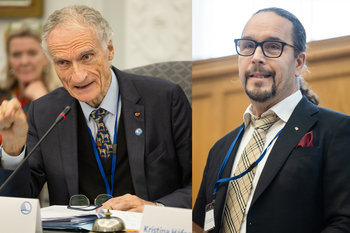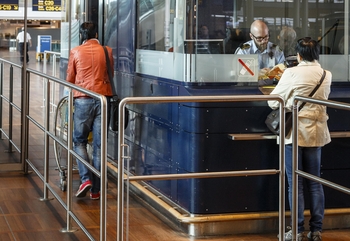Risk of cultural heritage being forgotten in the green transition

Bryggen, the colourful row of old wooden houses in Bergen, Norway, is a world heritage site. In preparing for increasing rainfall, the city didn’t bury deep drainage pipes but set up rain beds instead.
A rain bed, or “rain garden”, can soak up a lot of rainwater while benefitting biodiversity in the city and leaving archaeological cultural monuments in the subsoil untouched.
In the new Nordic report “Climate adaptation measures and cultural heritage”, the rain beds in Bergen are hailed as a good example of climate adaptation that also benefits the city’s cultural heritage.
Cultural heritage is destroyed by the sheer rate of change
This report is the result of a Nordic project which looked at how cultural heritage in the Nordic countries is affected by climate adaptation.
The aim is to improve understanding of the vulnerability of cultural heritage in the green transition.
During the ongoing green transition, we’re building wind farms, erecting solar panels and charging stations, building flood barriers, draining agricultural land, insulating houses, and burying gas pipelines.
Consequently, there’s a risk of changing old cultural landscapes, natural and cultural heritage, and building environments characteristic of our time.
“We’ve built sustainably before”
According to Annika Haugen, project manager at the Norwegian Institute for Cultural Heritage Research, it’s not uncommon for climate adaptation to take place without any concern for older building environments, archaeological cultural monuments, or cultural landscapes.
“However, it’s important that we bring our cultural history with us into the future, both by taking cultural heritage into account, but also using it as a source of knowledge. We’ve built sustainably in the past, and over the centuries we’ve learnt to adapt the design and placement of buildings to heavy rainfall and other extreme weather conditions. We mustn’t forget history and try to solve the green transition using new methods and technology alone,” says Haugen.
Culture-based solutions
She emphasises the concept of “culture-based solutions”, that is to say historical climate adaptation, as part of the answer to how we can deal with climate change.
“In a sustainable future, we wouldn’t build so much from scratch. We’d convert what already exists and recycle building materials. Knowledge of old methods, materials and construction planning then becomes tremendously important,” she says.
Examples of carefully sited wind farms
Most municipalities in the Nordic Region are working to prepare for larger quantities of precipitation. If we choose to deal with this by burying larger wastewater pipes, we risk both destroying archaeological material and disturbing the groundwater level, which can lead to subsidence and the destruction of older wooden structures.
The report gives several good examples of how towns and cities have prepared for torrential rain, floods and landslides using methods which benefit both biodiversity and cultural heritage.
It also gives examples of how to site solar and wind farms in order to avoid changes to cultural landscapes and cultural heritage.
Include cultural heritage experts
The report recommends that all sectors of society be involved early in the processes, both when it comes to establishing renewable energy sources and direct climate adaptation.
Archaeologists, architects, building antiquarians, biologists and other experts on rural natural and cultural heritage should also be involved in designing contingency plans and environmental impact assessments.
It also proposes a Nordic pool of expertise in the form of an expert network and a database with good examples of projects where cultural heritage is included in climate adaptation.
Some examples of climate adaptation where cultural heritage is preserved:
1. Rain beds in central Drammen, Norway
2. Cross-sectoral Cloudburst Management Plan in Copenhagen
3. Cultural heritage and flood protection in Vågå Municipality, Norway
4. Reinforcement of the 100-year-old seaweed embankments against flooding in Falsterbo, Sweden
5. Dismantling of Mårup’s medieval church, which is threatened by coastal erosion, Denmark.
6. Sustainable refurbishment and climate adaptation of the built environment, Tjärna meadows and Huseby Mill, Sweden
7. Solar farms as a replacement for solar panels on buildings, Gråsten in Jutland, Denmark
8. Sustainable renovation of buildings, Realdania, Denmark
9. Solar cells integrated in facade material, Drammen, Norway
10. Protection against rock slides, designed visually for minimal impact on the landscape of Lom, Norway




